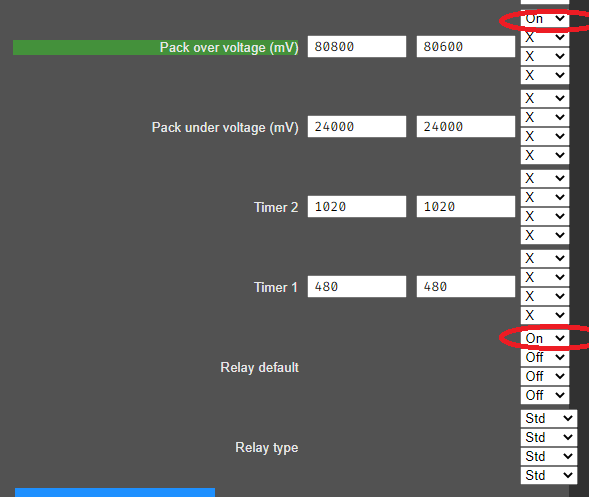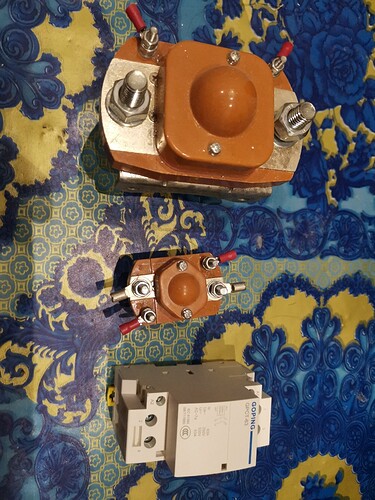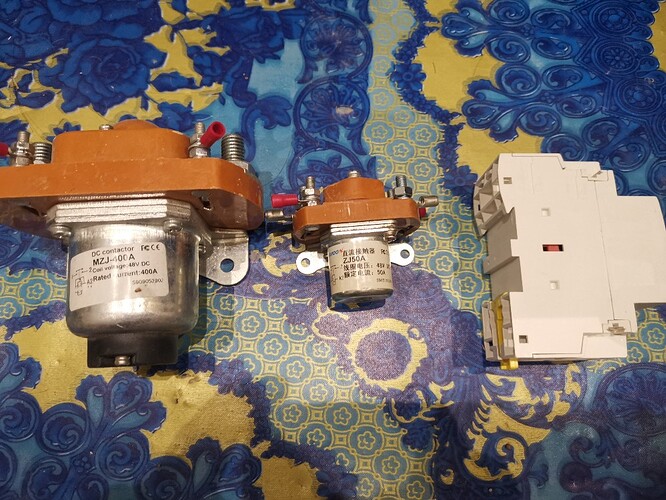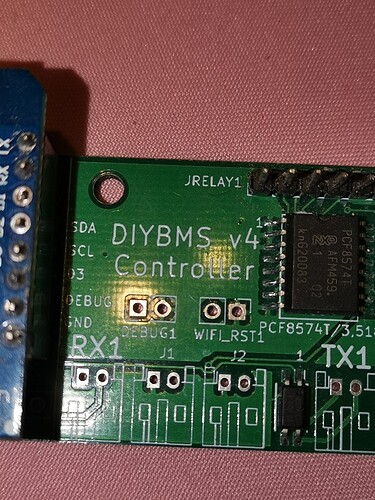Thanks! So does that mean without wifi, the bms won’t function? What if the local router dies?
If the router/internet goes down the BMS continues to function, but you can’t get to the web interface. It should be easy enough to leave the ESP8266 access point enabled rather than switching to the router wifi.
The two time based rules (for driving relays) won’t work without an internet NTP server to calibrate the current time.
That makes sense. So once connected via soft access point, the web ui can be accessed? Is there a specific ip address/address to access the ui when connected like this?
Its the default ESP one 192.168.4.1
Thank you @stuart, I ended up reflowing it with a heat gun and it work like a charm.
And thank you for the excellent work you did designing this BMS!
You asked a few days ago for other parts needed.
I’m not an expert but you do need high and low voltage disconnect.
Low Amperage installation can get away with mosfets (aka solid-state relays) higher (+50A) are better off to use contactors.
As I have an hybrid, MPPT and inverter in one, there is not a separate line to the battery for charge and discharge.
I use small contactor to stop the charge at the solar panels connection.
I use AC contactor for discharge
And a larger one to disconnect the battery when needed in absolute emergency.
All bought from AliExpress.
I also have a smoke detector that have relay.(+alarm) that triggers the jumper on the controler board.
@stuart, please help me locate it again.
I thought it was J2
That is 3 of the 4 relays used on the relay board at the controller.
I use the 4th for fans, if the cells (or cell PCB’s) ever get too hot.
That’s about it.
You need to control your power into the battery array for too high cell voltage.
You need to control your power out of the battery array for too low cell voltage.
The rest is (a welcome) extra.
For the wemos, both standard “pro D1”(8mb) and clone (4mb) works with the software from Stuart.
If you can buy the pro, better to have enough space on the wemos if future software upgrade would need it.

Hi stuart
On the firmware with hysteresis (although the wizard is the same), the settings logic is not clear. Relay default - It is logical to assume what state to keep the relay in before any logic rule is triggered (if enabled, then it is logical that the level is high and vice versa).
Pack over voltage (mV) - It is logical to assume that when the enable value is reached, switch the output to the state indicated in the corresponding field opposite and vice versa.
However, in practice, everything works the other way around.
Most relays have NO/NC wiring option are you sure you didn’t wire NC ?
To add to @rolfbartels question to you, “Normal” refers to the state of the relay contacts with no voltage applied to the coil.
That is not the same as the logic output, because it depends on how the coil is driven by the logic. A coil that is wired between the power rail and the logic output will be energised when the logic is LOW, and the NO contact will be closed. If the coil is wired between the logic output and ground, it will be energised when the logic is HIGH, and the NO contact will again be closed.
I see some confusion. In your image, On and On doesn’t necessarily mean ‘On’.
If this pack over voltage becomes True: then do this.
On means change the default relay state, not the relay is now on. If On means On, then there is no need for the default relay section.
The relay “ON” state the BMS refers to is the energizing of the relay. As others have said, if you use the “NC” connections then this will be inverted.
The BMS supports up to 64 modules so over 250V DC - however I really don’t recommend that, it was designed for 48V usage.
Each module can only measure up to 4.4V - normal range for a lithium cell.
So I will need to make a hardware modification on the modules to support 6.5v?
What type of cells operate at 6.5v?
The diybms isn’t suitable for this voltage, the modules use attiny chips which are only rated to 5v max.
What the parameter is responsible for - Relay default? In my understanding, what state should the relay be in by default? I understand correctly that if I switch this parameter to on, then the logic output will be 1, if I turn it off, then 0? (Other parameters are disabled)


